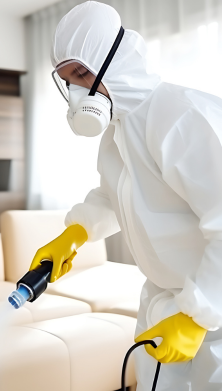Accidents happen. And when they do, insurers ask why, in order to build strategies for avoidance next time. At the Allianz Center for Technology (AZT), the leading consulting and research institute for risk engineering at AGCS, damage is an opportunity for knowledge. Scratches, tears, breaks and gnarled nubs of metal become art – painting a picture of perils that became losses.
Brazing cracks in a steam boiler - Brazing, a metal-joining process in which two or more metal items are joined together by melting and flowing a filler metal into the joint, is here shown under the light microscope looking like a close-up of a delta on an atlas. This brazing stems from a steam boiler (nozzle cap to nozzle body joint) and shows the presence of small cracks to the left hand side in the base metal that could lead to steam leakage or an explosion.
Foreign object in a cooling bore of a gas turbine blade - Looking like a metallic sculpture, the sliced fracture surface of a steam turbine’s blade root shows a fatigue crack probably caused by material overloading due to vibrations of the blade, itself. Used in thermal power plants, blades produce energy by capturing steam while turning at over 3,000 rpm under high-pressure conditions. Cracks can lead to operational disruption or turbine failure.
Deformed sealing strip in a steam turbine - This fancy filigree represents the deformed edge of a sealing strip inside an industrial steam turbine's rotor. Large turbines are used by the power generation industry to produce electricity, some of which are steam-powered. Sealing strips in the turbines prevent steam loss in the inner blade path, as well as external leakage. If the small seal clearance is bridged, damage can occur to the rotor, nozzles, rotating components or other parts, eventually leading to damages requiring replacement of the turbine.
Biomass boiler (inside) - Heating conditions in a biomass boiler, which uses sustainably-sourced wood chips, pellets or logs for combustion rather than gas, can became too hot, causing changes at the micro-level that impact the heat-resistance of the boiler’s internal material, creating a microscopic image worthy of an abstract expressionist gallery. Improper heat loads can damage the insulated boilers and cause leaking, breakdown, melting or even an explosion.
Gray cast iron pump casing - Pearlite, a structure composed of layered ferrite (a type of iron) and cementite (iron-carbon compound), together with lamellar (“snake-like”, black) graphite is found in materials like this grey cast-iron casing that seals a pump’s inside. Microscopically, it looks like a Jackson Pollack abstract. If cast-iron cracks or breaks, it could leak air or water.
Damaged coatings inside a piece of electroplated metal - Anode coating on a piece of electroplated metal looks like shattered ancient treasures on the floor of a forgotten sea. Coatings provide increased thickness or protection to metal, but, if damaged, could lead to corrosion and breakdown. Often, anode coated pipes corrode if they contact DC currents (for example, if part of a pipe laid in an area in close proximity to an electric-powered train or trolley).
Broken fibers in glass fiber-reinforced plastic material, such as these viewed through a scanning electron microscope (SEM), can negatively affect the stiffness and tensile strength of certain composite materials like fiberglass, which is used in manufacturing from automobiles to boats to airplanes.
Deformed sealing strip in a steam turbine - This fancy filigree represents the deformed edge of a sealing strip installed on the outer diameter of an industrial steam turbine's rotor. Large turbines are used by the power generation industry to produce electricity, some of which are steam-powered. Sealing strips in the turbines prevent steam loss in the inner blade path, as well as external leakage. If the small seal clearance is bridged, damage can occur to the rotor, nozzles, rotating components or other parts, eventually leading to damages requiring replacement of the turbine.
Foreign object in a cooling bore of a gas turbine blade - Looking like a detached eyeball or one of Kandinsky’s concentric circles, an oxidized foreign object particle has invaded the cooling bore of a gas turbine blade like those commonly found in aircraft or other gas-powered turbine engines. Such microscopic defects could lead to cracks, burns or blocked air passages, with catastrophic results.
Water turbines vane - A malicious Jack Skellington grin on this broken Kaplan turbine vane looks menacing hints to the damage it might have caused. Such propeller-type water turbines are used for hydroelectric generation. The vanes of a turbine direct water efficiently down to the propeller’s runner blades. Absence or breakage of them could impair the efficiency of an entire turbine or even halt production of an entire generating plant when causing consequential damage to the entire turbine.
What is the Allianz Center for Technology (AZT)?
The Allianz Center for Technology (AZT) is part of AGCS and has been providing damage analysis, loss prevention and industrial risk management services for over 80 years.
Download Global Risk Dialogue Summer/Autumn 2019
This article is part of the our Global Risk Dialogue. Appearing twice a year, Global Risk Dialogue is the Allianz Global Corporate & Specialty magazine with news and expert insights from the world of corporate risk.
Newsletter
Keep up to date on all news and insights from Allianz Commercial

























